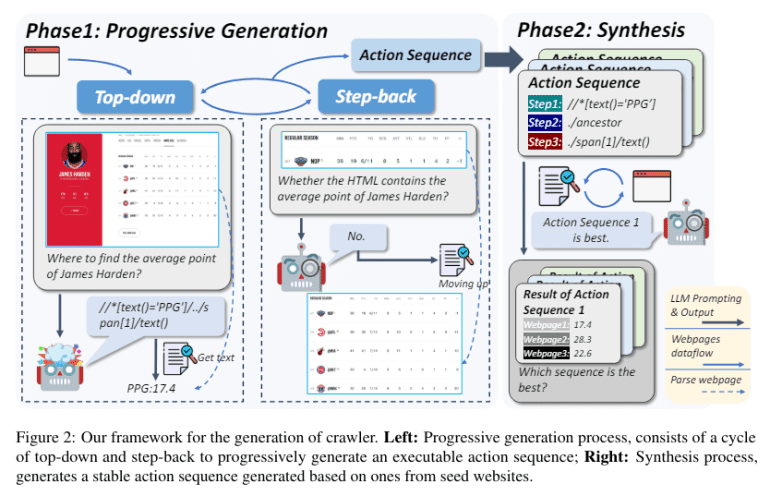- AUTOCRAWLER, a two-stage framework, revolutionizes web automation by leveraging HTML’s hierarchical structure.
- It adapts quickly to web environments, learning from past interactions to optimize future actions.
- Experimental results demonstrate significant enhancements in accuracy and efficiency compared to traditional methods.
- Integration with smaller language models yields substantial improvements, with correct execution rates exceeding 40%.
Main AI News:
In the realm of digital operations, web automation stands as a cornerstone for streamlining complex tasks that traditionally necessitate human intervention. These technologies, leveraging scripts or software wrappers, automate actions within web-based platforms, fostering efficiency and scalability. However, the challenge persists in adapting to dynamic web environments, where conventional tools falter.
Enter AUTOCRAWLER, a groundbreaking framework developed by researchers from Fudan University, Fudan-Aishu Cognitive Intelligence Joint Research Center, and Alibaba Holding-Aicheng Technology-Enterprise. This sophisticated two-stage approach transcends the limitations of existing web automation tools by harnessing HTML’s hierarchical structure to navigate and interact with web pages effectively.
AUTOCRAWLER’s innovation lies in its agility and adaptability. Through a blend of top-down and step-back operations, it learns from past encounters to optimize future interactions with web elements. As it traverses web pages, it refines its approach, minimizing errors and maximizing efficiency.
The framework’s prowess was validated through rigorous testing, which is particularly evident in its performance across diverse web environments. In tests involving multiple large language models (LLMs), AUTOCRAWLER showcased a notable success rate enhancement, surpassing the precision metrics of existing tools by a significant margin.
Experimental results underscored AUTOCRAWLER’s transformative impact on web crawlers, showcasing a remarkable increase in accuracy and efficiency. Notably, when integrated with smaller LLMs, AUTOCRAWLER achieved a correct execution rate exceeding 40%, a substantial improvement over conventional methods.
AUTOCRAWLER heralds a new era in web automation, offering businesses unprecedented adaptability and efficiency in navigating the complexities of modern web environments. With its ability to swiftly learn and adjust, it emerges as a powerful tool for organizations striving to optimize their digital operations.
Conclusion:
AUTOCRAWLER’s innovative framework signifies a significant advancement in web automation technology. Its adaptability and efficiency pave the way for enhanced productivity and scalability in digital operations. This development is poised to reshape the market landscape, offering businesses unparalleled capabilities in navigating the complexities of modern web environments.

